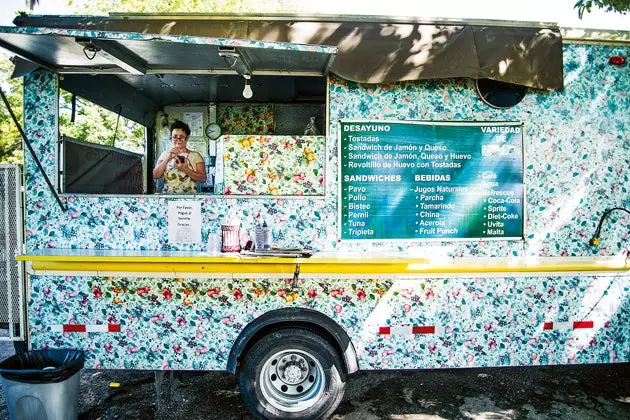
Food Truck on Ponce de Leon Street
I had only been in San Juan for a few hours and suddenly I was lost on a deserted street in the industrial neighborhood of Santurce . After driving under a freeway overpass and dodging a place called D'Girls—a sushi bar that turns into an all-night strip club—I knew I'd gone off the beaten track. There were neither crystal clear beaches nor any cobbled to remember the colonial past of the city. Just a little bumpy road and surrounded by dilapidated buildings.
But then something happened: the music and the sound of laughter made me feel that, by mistake, I had found a place full of mystery and possibility . The origin was a restaurant called José Enrique, impossible to go unnoticed despite not having any type of sign. Inside, the spirit was informal and festive . I settled on an empty bar stool and quickly realized that I was in one of those places that have opened in San Juan in recent years with the intention of ending their bad reputation: a city of mediocre food, where sometimes forget the local culture in order to have a place facing the sea.
The waiter nonchalantly explained that my salad was made with organic vegetables from a farmers market in Guavate . And with just one bite of that whole, boneless, deep-fried red snapper served with a spicy papaya-avocado sauce, I could understand. why the owner and chef had just been nominated for a James Beard Award (foundation dedicated to preserving American culinary traditions) .
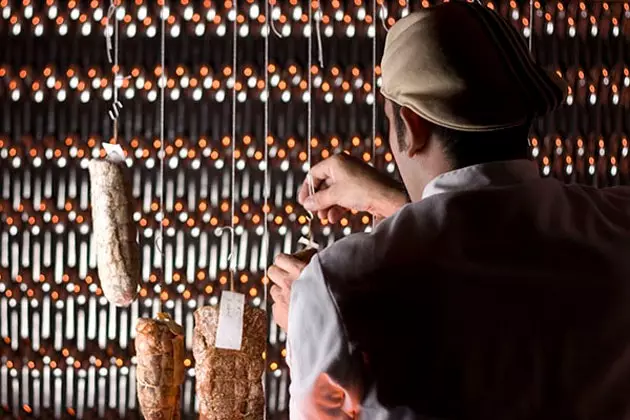
The eco restaurant of San Juan
At the end and thanks to the help of too many shots of aged rum, I ended up fraternizing with a group of rather strange-looking young people. As I stumbled into my room at the Olive Boutique Hotel, which opened two years ago as a counterpoint to the huge complexes of the exclusive Condado neighborhood I understood why everything here feels so familiar. San Juan has a rudimentary but sophisticated point; is in that sweet moment of transition, in which it is still possible to feel that you are part of something new and exciting.
The feeling intensified the following days as I wandered through San Juan and to elaborate portion restaurants like Gallo Negro , by sleepy Miramar , or La Factoría, an artisanal cocktail bar in Old San Juan popular with locals and visitors alike. they stay in the Dreamcatcher, a hostel in Ocean Park with vintage furniture and yoga classes.
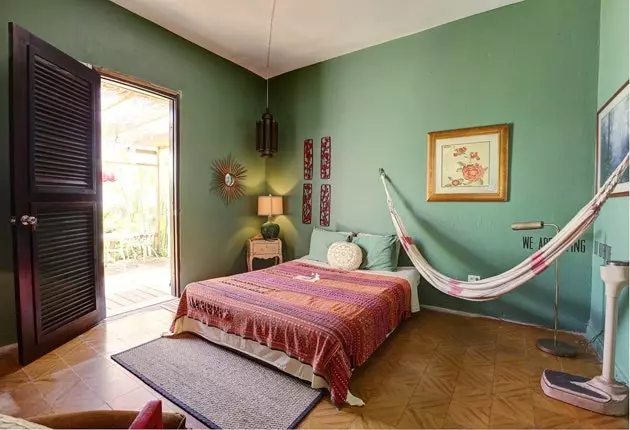
The relaxing hostel in San Juan
Although it was impossible to avoid talking about business closures or Puerto Rico's economic difficulties, I realized that in the shadows of mega-resorts and cruise ships, the city was about to be reborn. Apart from the fact that San Juan is modernizing, there is a type of visitor, the one who would have chosen to spend a week in St. Barts, has decided to become a resident, excited to discover a place that is America and, at the same time, is away from her.
On my second day, I stopped at Aaron Stewart Home, a furniture boutique opened last fall by Aaron Stewart and Fernando Rodriguez , a couple from New York. In an old Ford factory, in Puerta de Tierra – an area on the outskirts of Old San Juan known for its high crime –, His store is one of those companies that are transforming the neighborhood into the first art and design district in the city. Nearby is Walter Otero Contemporary Art and, across the street, Mitchell Gold & Bob Williams.
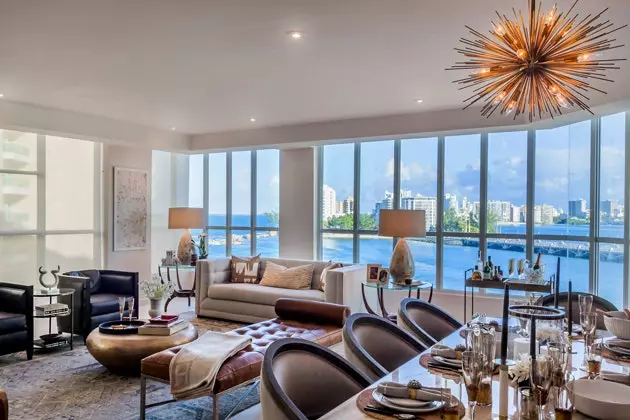
TOP design in San Juan
As a result, there are new openings, such as Livin , a restaurant in a nearby park, and fresh energies that are taking hold in traditional places, such as the Mexican El Charro , and confirm this trend of renewal. Beyond Aaron Stewart Home, the local artist Carlos Mercado has installed his studio , which he intends to turn into a gallery where he can show his work and that of other artists. That will be when he finishes with the design of a boutique hotel in a former church . “We love the idea of being pioneers, something that in New York is basically impossible,” Rodríguez, a handsome and eternally tanned man in his fifties, confessed to me.
Together with Stewart, who worked for Martha Stewart (they are not related by blood), that night we dined at Soda, a fairly unassuming trendy restaurant near her apartment in Miramar, whose main artery is home to regular arthouse and arthouse moviegoers. wrinkled old men playing dominoes in salsa bars under neon lights.
When they moved here they came prepared to tighten their belts, but the store ended up creating opportunities they never would have imagined in New York. Both realized that their success was also due, in large part, to the approval of the Law Act 22 of 2012 , which boosted the island's economy by lowering taxes on foreigners who built a home here. "We really thought we were just coming to open a little shop," Stewart continued, "but now our design business is as big as the one we had in New York."
Among his first commissions is the pop-up shop for the lobby of the new Ritz-Carlton Reserve, in Dorado Beach , for which they had to hire a friend from New York to help them. “She fell in love with the place so much that she decided to come and live here,” Rodríguez told me. “There is no doubt that something special is happening.”
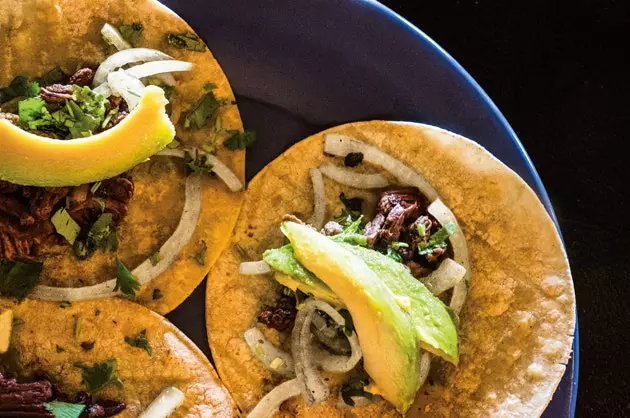
El Charro Tacos
The next day I spent the whole afternoon riding a rental bike through the streets of after workshops . Its name comes from the 19th century railway mechanic workshops, but today we could consider it the street art capital of the caribbean , with intricate graffiti covering every building.
My next destination was The Food Department, a vegan cafe, organic market, craft store, unofficial hipster headquarters that opened two years ago in a former garage. Its owner, Tara Rodríguez, was born on the island 30 years ago, but she moved to Brooklyn to study architecture at the Pratt Institute. Sitting on a mid-century sofa with a bowl of fresh gazpacho in hand, you can't help but think about how many old houses that host different projects and that stand as the testimony of what the neighborhood is and where it is going to go; it is in the process of being converted into a condominium for wealthy residents who have just discovered it.
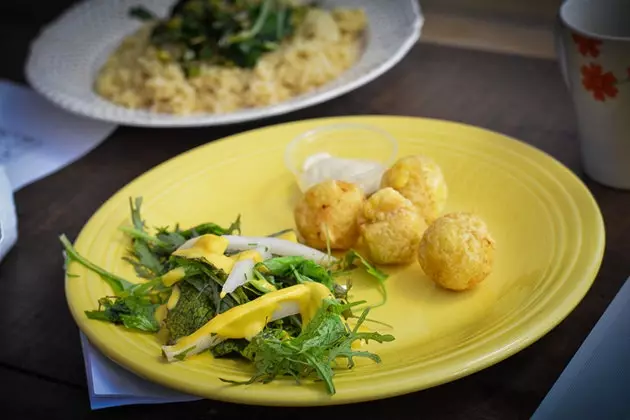
Veganism in Puerto Rico
That night I met with Juan José Robledo, whom I had met at the José Enrique restaurant and with whom I arranged to talk to me about the constant evolution of Loiza de Santurce street . "Dude, it's crazy what happened," he told me as he drove his beat-up truck. “I grew up here and back then there was nothing at all. Few bars, some family businesses, the only thing. But now you have stuff like this,” he said pointing to what looked like a vacant lot. "See that screen? They show movies several times a week there."
It was Friday night, and the bars and restaurants were packed . Only a few seemed to have been born before 1980. Our first stop was a 'whiskey pizzeria' called Loiza 2050 , opened in 1986 and renovated by the owner's daughter last year. With its reclaimed wood, its graffiti covered walls and impressive selection of whiskeys , 2050 has been adapted to the current state of the neighborhood.
Since we had more than an hour to wait at the Mexican next door, we went to Tresbé, a restaurant in a bright yellow shipping container whose owner, Mario Ormaza, graduated from the Culinary Institute of America , made me organic mini-burgers.
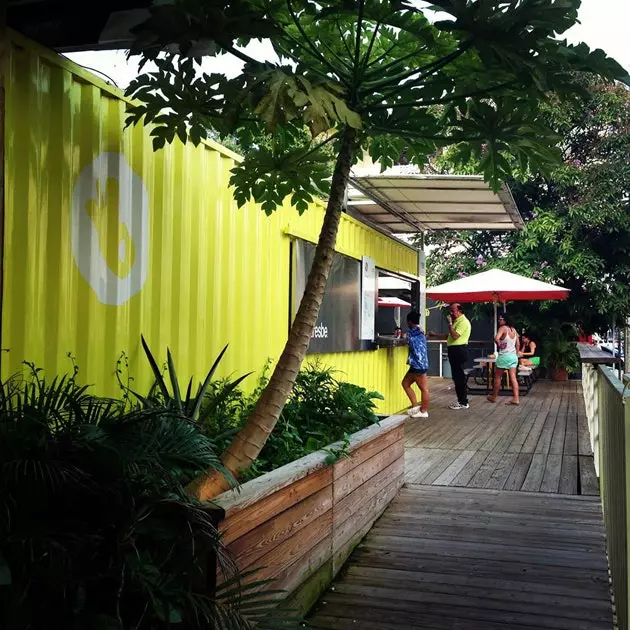
the yellow container
The night ended when I glanced at the clock and realized that, inexplicably, it was already six in the morning – something that can happen to you in San Juan if you're not careful. Robledo had taken me to so many bars that he knew that the next day he would need help, so he offered me lunch at The White House . “It is from the old school, from the authentic Puerto Rico, like eating at grandma's house , he stated as the car zigzagged through Villa Palmeras, a neighborhood still plagued by poverty and violence (nobody walks the streets at night anymore, which is why the restaurant only opens at noon).
But even here there are signs of change. After serving us steak and fried plantain chips and crabmeat-stuffed avocados, owner Jesús Pérez took me up to the rooftop to show me around the organic garden. “It is important to know where food comes from”, he told me he. I could be in Brooklyn, except for one thing, less than a mile he could find an empty stretch of beach and, under the shade of a palm tree, lose consciousness.
* This article is published in the Condé Nast Traveler magazine July-August number 75. This issue is available in its digital version for iPad in the iTunes AppStore, and in the digital version for PC, Mac, Smartphone and iPad in the Zinio virtual kiosk (on Smartphone devices: Android, PC/Mac, Win8, WebOS, Rim, iPad) .
_ You may also be interested..._*
- Romantic Puerto Rico: The Secrets of Vieques
- Puerto Rico, an island to discover
- Williamsburg, chronicle of a hipster neighborhood
- Barbapasta tourism: hipster destinations in the world
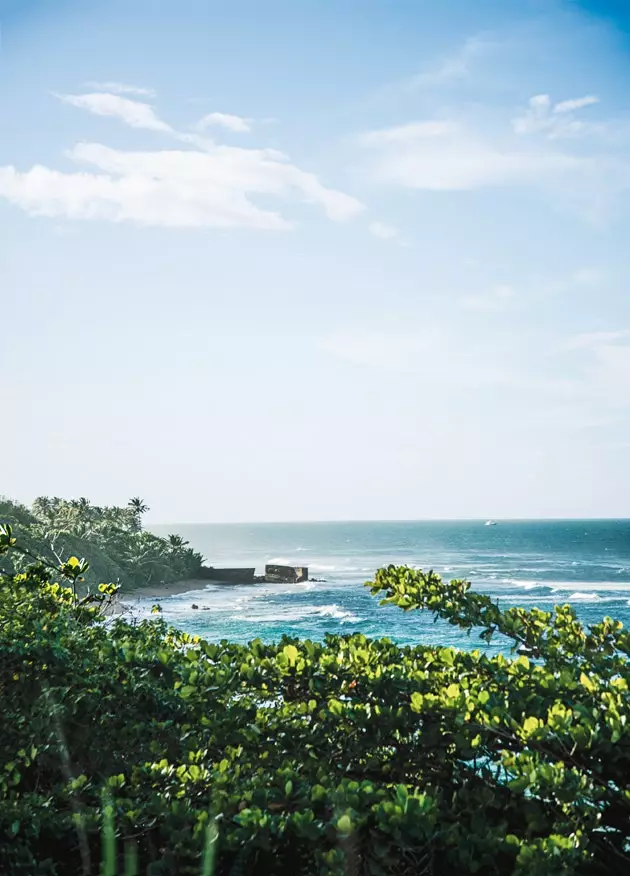
Puerto Rico, in full sweet transition
